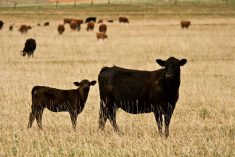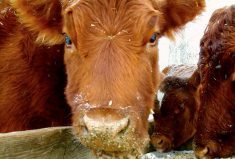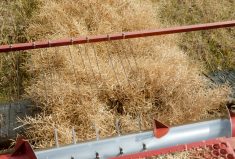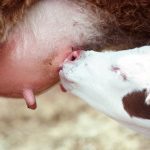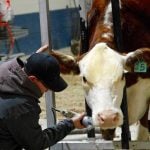Compared to last week, western Canadian yearlings weighing over 800 lbs. traded steady to $2 lower on average. Feeder cattle under 800 lbs. were relatively unchanged. Alberta packers were buying fed cattle on a dressed basis at an average price of $288 delivered, down from the range of $288-$290 seven days earlier. Using a 60 per cent grading, live prices would equate to $173. Break-even pen closeouts are closer to $184.
The feedlot sector has experienced a prolonged period of negative margins which is limiting the upside in the feeder cattle market. The sad part is that it looks like margins will get worse before improving in the final quarter of 2022. Buyers of feeder cattle are balancing the negative fed cattle fundamentals in the short term with a bullish fed cattle price outlook for the fall and winter period. Supplies of feeder cattle are tightening as we head into the summer period. Backgrounding operations have finished liquidating fall placed calves.
Read Also

U.S. grains: Soy hits four-month high on hopes for China trade deal
U.S. soybean futures jumped to their highest level in more than four months on Monday on hopes that China will resume buying American supplies after President Donald Trump said the countries were set to reach a trade deal during his trip to Asia this week.
In central Alberta, larger-frame Simmental-based steers on forage ration with full health data averaging 830 lbs. dropped the gavel at $190. In the same region, tan heifers with medium to lower flesh on forage ration weighing 930 lbs. were quoted at $175. In the Lethbridge area, a small group of mixed steers just over 900 lbs. on forage ration with health records were quoted at $188. Small volumes of yearlings were available in Manitoba and Saskatchewan making the market hard to define.
South of Edmonton, mixed steers on small grain ration with very little butter weighing 750 lbs. were quoted at $210; mixed heifers with similar characteristics averaging a shade over 700 lbs. were reported at $188. Near Lethbridge, a small group of Charolais-based steers on forage diet weighing 730 lbs. were valued at $223 landed in the feedlot.
South of Edmonton, mixed heifers averaging 650 lbs. sold for $196 and mixed steers rattling the scales at 670 lbs. were valued at $218. Southeast of Saskatoon, a small group of Angus-based steers weighing 520 lbs. were valued at $240; southeast of Calgary, a group of black Angus steers weighing 560 lbs. were quoted at $241 at the feedyard.
Seeding is wrapping up in the western Prairie regions while seven to 10 days is needed in eastern Saskatchewan and Manitoba. Demand for grassers has stepped forward although supplies are limited.
Auction markets once again reported renewed interest for cow-calf pairs and bred heifers. Prices were unchanged from last week, with good quality cow-calf pairs trading at $2,700-$3,100.
— Jerry Klassen is president and founder of Resilient Capital, specializing in proprietary commodity futures trading and market analysis. Jerry consults with feedlots on risk management and writes a weekly cattle market commentary. He can be reached at 204-504-8339 or via his website at ResilCapital.com.






